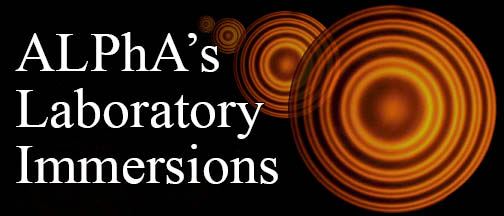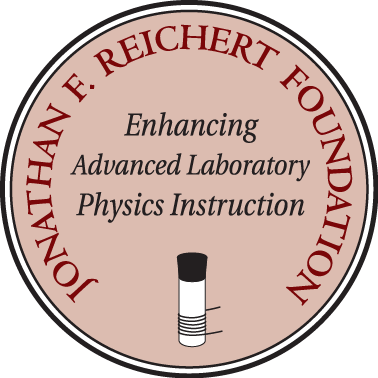- Home
- What We Do
- Laboratory Immersions
- Immersions 2025
- Imm2025Lawrence_OpenSourceMicroscope
Lawrence University, Appleton WI
Build an Open Source Fluorescence Microscope and Use it for Diffusive Hydrodynamics
July 23, 2025 to July 25, 2025
Number of setups
available: 3
Maximum
number of participants: 6
------------------------------------------------------------------------------------------------------------------------------------------
Optical microscopy is an excellent Advanced Laboratory tool: it offers students the chance to immediately see diffusion in action, while also offering quantitative analysis and an opportunity for extensions to more complex fluid dynamics such as boundary-particle hydrodynamic coupling. And an open-source optical microscope offers the chance for student modifications for even more experiments.

Figure caption: An Immersion participant's newly-built microscope – started as parts on day 1, imaging by day 3.
At this Immersion, participants will:
(1) Build a research-grade fluorescence microscope (four-color fluorescence, single molecule imaging, diffraction limited resolution of ~250 nm);
(2) Use their microscope to explore diffusion of microscopic objects, extracting the diffusion coefficients, Boltzmann’s constant, and solution viscosity with ~2% precision and 1% accuracy.
Day 1: Participants will begin by building, aligning, and characterizing this open-source-design microscope, comprising a mix of machined, 3D-printed, and off-the-shelf optical components.
Day 2: Participants will then learn to operate the microscope while imaging microspheres (100-1000 nm dia.) and using open-source tracking software to extract diffusion coefficients. Additionally, participants will learn to use 3D imaging to examine hindered diffusion when these microspheres are within a few diameters of a planar boundary. Time will be available to re-design and print custom parts as desired.
Day 3 (morning only): Participants will explore other uses of this microscope. Possibilities include imaging fluorescently labeled biological cells, imaging molecular motors in action, imaging swimming micro-organisms.
All equipment will be provided; participants may also collect data on their own laptops.
If participants wish to take home their newly-built apparatus at the end of the immersion, arrangements should be made ahead of time to handle lead-time for ordering parts.
Website for the microscope itself: https://wosm.net/
References to the relevant physics:
Einstein: “On the Motion of Small Particles Suspended in Liquids at Rest Required by the Molecular-Kinetic Theory of Heat”, (1905).
Koo, H. P., and Verkman, A. S., “Tracking of single fluorescent particles in three dimensions: use of cylindrical optics to encode particle position” (1994).
Banerjee, A., and Khim, K. D., “Experimental verification of near-wall hindered diffusion for the Brownian motion of nanoparticles using evanescent wave microscopy”, (2005).
Approximate cost to implement:
$8500 Microscope (including illumination, optics, electronics, machined and 3D printed parts)
$1500 Alignment optics, tools for assembly, carrying case, samples for imaging
$500 Computer to control the microscope

Host and Mentor:
Doug Martin received his PhD in physics from the University of Texas (Austin) and completed a postdoc in biochemistry at Brandeis before arriving at Lawrence University in 2007.
His research involves single molecule biophysics focused on the forces involved in cell division. Doug has built the microscopes for this research, most recently a super-resolution optical microscope that can resolve objects on the scale of 15 nm. This, and the open source microscope in this immersion, are the products of a long-standing collaboration with cell biologists at the University of Warwick (UK).
Doug teaches across the physics curriculum (including experimental optics); he runs far too much; and lives in Appleton with his daughter and two cats.
Please note that the Jonathan F. Reichert Foundation has established a grant program
to help purchase apparatus used in Laboratory Immersions. Limitations
and exclusions apply, but generally speaking the Foundation may support
up to 50% of the cost of the required equipment.




